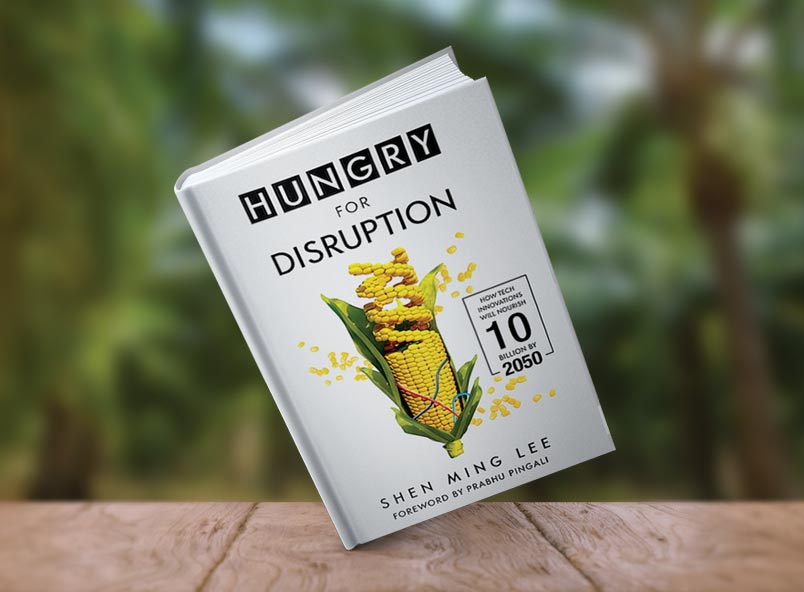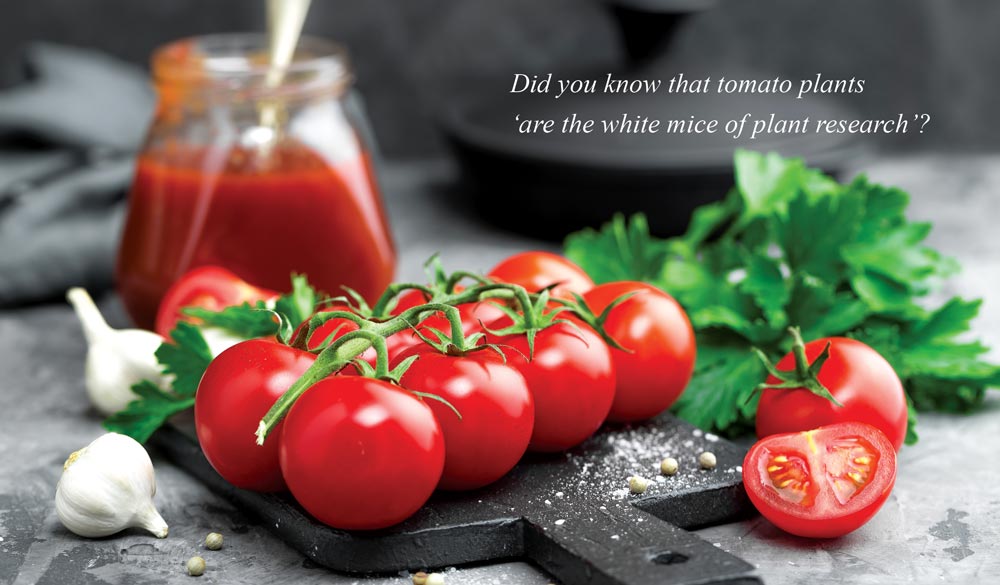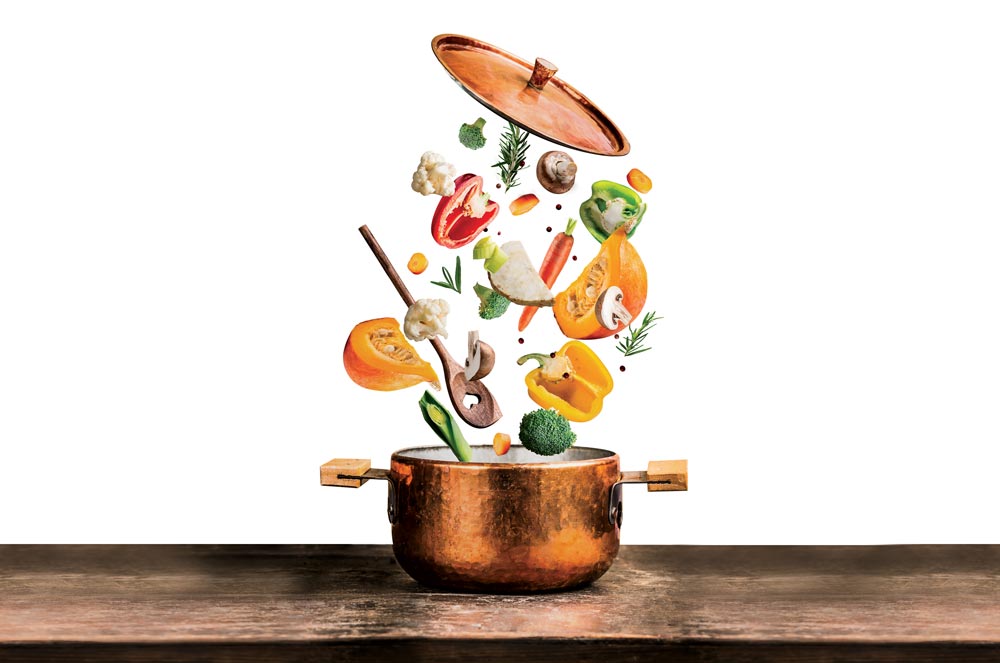



The story of food is the story of civilisation. Cogito, ergo sum is a Latin philosophical proposition by Rene Descartes. It is all well and good for the philosopher to say ‘I think, therefore I am’; but from the perspective of our survival as a species ‘I eat, therefore I am’ is more to the point, which surely must be the unspoken and underlying premise of Shen Ming Lee’s brave book, Hungry For Disruption.
The author, a Malaysian from a family of oil palm planters and a self-confessed lover of all things gastronomy, has qualified the ambit of her work upfront, literally. On the book cover all neatly boxed up is this qualifier: ‘How Tech Innovations Will Nourish 10 Billion By 2050’. The key word here is ‘nourish’, for malnutrition is the ‘invisible’ hunger in many parts of the world. Billions must be nourished, not merely fed. Also, the name of the publisher, the New York-based New Degree Press, is a bit of a giveaway – the young author is an undergraduate at Cornell University.
Now as to the contents, like a play written in acts, Shen Ming has neatly sectioned it into four easy-to-read parts with their accompanying chapters. She writes with unbridled enthusiasm and infectious optimism. She is bereft of the bias that ‘old is gold’. Or of the negativism that comes from endless hype and broken hopes and promises. There are no tables or graphs or hard-to-follow scientific premises.
To borrow a food metaphor, her writing is highly digestible, although you may not always agree with her tastes or views – or with the people whose views she has expressed. Each chapter can be read and, yes, digested on its own like a dish of a 10-course dinner. And, by the way, whether intended or not, there are indeed 10 chapters. Pick up the book and read any page and you will be well informed!
All kudos to Shen Ming, for she has taken upon herself the rather difficult task of providing an overview of the many changes taking place here, there and everywhere – on the frontlines of how we may produce and eat food in the decades ahead, while at the same time keeping an eye on the herculean and ambitious effort going on in labs and tech firms, in fields and farms, and in factories making drones and farm robots that will help the world to feed itself in the future.
Within the covers of this book she has marshaled a vast array of ongoing evidence on the various work-in-progress innovations and ideas that will disrupt the food industry. A whole vocabulary comes along with it: big data, AI, block chain, vertical farming, urban farming, smart agriculture, micro gardens, democratisation of food production, CRISPR (clustered regularly interspaced short palindromic repeats), drones and robots to name some off the head. In the brave new world of disruption, this is not jargon, it is for real! And of course, there are nuggets of delectable information buried within. Here is one: Did you know that tomato plants ‘are the white mice of plant research’? I leave readers to discover the other delectables for themselves.

This book is important not because it has compiled a vast array of information on disruption from the proverbial four corners of the world, especially the leading western countries, farmed or otherwise, but because it will help us join the dots in our attitudes and responses to the foods of the future, in particular, the new face of agricultural technology in general.
We must, by necessity, connect with pure research scientists, innovators, venture capitalists and tech companies who will put food on our tables going forward. Also, surely it cannot be business as usual given the food inequities around us, and the looming challenges of climate change. It may surprise the reader that one-third of all food produced goes to waste even as millions starve.
Yet, the mainstream media feeds us information and images on the impending food crisis precipitated by adverse weather and climate change, which are disparate and disjointed and often full of doom and gloom: an odd article on climate change; a documentary on how cattle-farming fuels global warming; a news clip of farmers rioting in the streets against the withdrawal of subsidies; a warning on the perils of consuming a particular food overdosed with pesticides; a sensational story of a test robot picking fruits; a headline on livestock dying of distress and drought in some parched country; a video on mobile phones on the promising future of urban farming; a still photo of a drone hovering over a field of soybean in Mato Grosso state in Brazil, or a field of young palm plantings in Sandakan, Sabah; climate refugees drowning by the boatloads; a gaunt-faced sub-Saharan beseeching us from our TV screens … all reminders that do not help us to understand that half the world is hungry and the rest may be consuming unhealthy food poor in nutrition.
The rich and well-nourished will take little heed of all this. They are informed but not engaged, with their senses dulled by full bellies. The warnings of an impending disaster feel and sound like thunder echoing in the distance. We feel no sense of immediacy or urgency.
We remain oblivious that humankind may literally go for each other’s throats in the not-too-distant future if there is not enough food on the table to feed the family. A hungry man will turn angry. A right to food may soon become an enshrined political right as demanded by the hungry masses. They will take to the streets without vote when the belly is empty! This is the stuff of revolutions.

Embracing innovation
Shen Ming Lee’s Hungry For Disruption is doing us all, rich and poor, a big favour by pointing us in the right direction. It gives us a coherent view of the food industry going forward. As she sees it, it is a book written with Hope, spelled with a capital H. The author has attended hundreds of workshops and forums, met and interviewed scientists, fund managers and others working on the frontlines of, to quote her, ‘the democratisation of food production’.
We must share her Hope. Her list of references and notes run into many pages, evidence that she has done her homework. Shen Ming, like others following the story of disruption in the food industry, believes power is shifting from large agri-food conglomerates to innovative startups.
Perhaps here is a wake-up call for our palm oil industry! As an old tropical tree crop Planter, I note with much sadness and alarm after perusing this book that, as an industry, we are not engaging sufficiently with the tech companies making meat in labs or the startups growing vegetables in a warehouse or the other innovators in agriculture.
We must get a toehold on these new innovations or otherwise, when alternative foods become the norm, we will be an ‘also-ran’. That is, we must position palm oil to be compatible with the emerging foods of the future like vegetable burgers or lab meat. Palm oil, like beef from cattle, is a natural product but that does not mean we are safe and sound forever.

Not to take anything away from this book, the author could have strayed a little beyond its stated ambit and satisfied our curiosity by giving us a glimpse of our future breakfasts, lunches and dinners, and not forgetting our snacks as well in 2050.
Would we be eating food out of toothpaste-like tubes or will a drink suffice? How about the vitamins? How safe will it be in the long run? No risk of cancer or the occurrence of new diseases and ailments? How different will societies be when we can produce food by purpose and design as regards quantity and quality for the first time in history, unaffected by the vagaries of weather? What! No more trial and error in food production? But many foods we love today – like Guinness, yoghurt, cheese and pickles, or from an excess of production like rice wine and beer – were the product of such errors. How will this affect human conduct, its ethics and its ethos? Who will control the new knowledge and the new technology of disrupted food?
For lack of a postscript, I was left with a flat taste in my mouth and a hollow feeling in my belly fueled by apprehension. But every Planter worth his salt should still read this book and stop believing that the good old days will go on forever and ever, like a fairy tale.
What this book makes clear is that disruption will come to farming and food production. It is not a question of if, but when. And disruption comes with some havoc. We cannot have one without the other. Well done, Shen Ming Lee!
M R Chandran
Advisor
Roundtable on Sustainable Palm Oil
